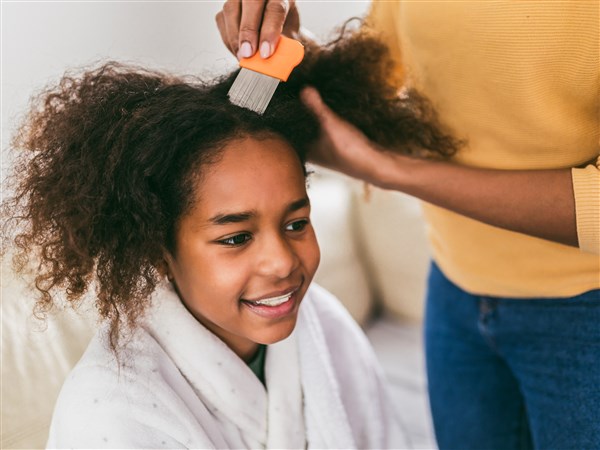Understanding The Health Risks Associated With Synthetic Hair Braids In Black Women

Table of Contents
Traction Alopecia and Hair Loss
Tightly braided hairstyles, while aesthetically pleasing, can lead to traction alopecia – a type of hair loss caused by excessive pulling or tension on the hair follicles.
The Mechanics of Traction Alopecia
Traction alopecia develops gradually. The constant pulling from tight braids weakens the hair follicles, causing them to miniaturize and eventually stop producing hair. This process can lead to noticeable thinning, a receding hairline, and even permanent hair loss if left untreated.
- Stages of Traction Alopecia: The condition progresses from initial hair thinning and scalp tenderness to noticeable hair loss and, in severe cases, irreversible baldness.
- Symptoms: Common symptoms include gradual hair thinning, a receding hairline, especially at the temples and nape of the neck, and a tender, itchy scalp. You might also experience breakage and increased shedding.
- Long-Term Effects: Untreated traction alopecia can result in permanent hair loss, requiring long-term treatments or even hair transplants to restore hair growth.
Scalp Infections and Irritation
The environment created by synthetic braids can significantly increase the risk of scalp infections. The close proximity of the braids to the scalp traps sweat, dirt, and oil, creating a breeding ground for bacteria and fungi.
Bacteria and Fungi
This lack of proper air circulation contributes to the growth of various microorganisms.
- Common Scalp Infections: Folliculitis (inflammation of hair follicles) and tinea capitis (ringworm) are common scalp infections associated with braided hairstyles. These infections can cause itching, inflammation, and even pus-filled bumps on the scalp.
- Symptoms: Symptoms can range from mild itching and redness to painful sores and significant scalp inflammation. In some cases, fever and swollen lymph nodes may also occur.
- Importance of Scalp Hygiene: Maintaining meticulous scalp hygiene is crucial. Regular cleansing with a gentle, medicated shampoo and ensuring the scalp is completely dry after washing can help minimize the risk of infection.
Allergic Reactions and Chemical Exposure
Synthetic hair extensions, dyes, and adhesives can contain chemicals that trigger allergic reactions in susceptible individuals.
Synthetic Hair Materials
Many synthetic hair products contain chemicals like dyes, preservatives, and adhesives that may cause allergic contact dermatitis.
- Common Allergens: Common allergens include certain dyes, fragrances, preservatives, and the adhesives used to bond extensions to natural hair.
- Symptoms of Allergic Reactions: Allergic reactions can manifest as itching, redness, swelling, and a rash on the scalp or surrounding skin. In severe cases, blistering and significant inflammation can occur.
- Choosing Hypoallergenic Products: Opting for hypoallergenic synthetic hair and adhesives can minimize the risk of allergic reactions. Carefully review the product ingredients and conduct a patch test before extensive use.
Headaches and Scalp Pain
Extremely tight braiding techniques can lead to headaches and persistent scalp pain.
Tight Braiding Techniques
The tension from overly tight braids can compress nerves and blood vessels in the scalp, causing pain and discomfort.
- Types of Headaches: This can trigger tension headaches, which are often characterized by a dull, aching pain around the head and neck.
- Impact on Daily Activities: Persistent headaches and scalp pain can significantly impact daily activities and quality of life, leading to difficulty concentrating, sleep disturbances, and reduced overall well-being.
- Seeking Professional Help: If you experience persistent or severe headaches or scalp pain associated with tight braids, consult a healthcare professional for appropriate diagnosis and treatment.
Preventing Health Risks Associated with Synthetic Hair Braids
By practicing proactive hair care, you can significantly reduce the health risks associated with synthetic hair braids.
Healthy Hair Practices
Taking a preventative approach is key to maintaining healthy hair and scalp while enjoying the aesthetic appeal of braids.
- Choosing Less Damaging Extensions: Opt for lighter, breathable synthetic hair extensions to minimize tension on the scalp.
- Proper Braiding Techniques: Avoid extremely tight braiding. Ensure that the braids are not pulling or tugging excessively on the hair and scalp.
- Maintaining Scalp Hygiene: Regularly cleanse the scalp with a gentle shampoo, and make sure to thoroughly dry the scalp to prevent the growth of bacteria and fungi.
- Regular Scalp Checks and Professional Hair Care: Schedule regular check-ups with a stylist or dermatologist to monitor the health of your scalp and hair.
Conclusion:
This article has highlighted the potential health risks associated with synthetic hair braids in Black women, emphasizing the importance of preventative care. Traction alopecia, scalp infections, allergic reactions, and headaches are significant concerns that can be mitigated through mindful choices. Prioritize your hair health and make informed decisions when choosing hairstyles and hair extensions. Remember, choosing the right stylist, using appropriate techniques, and maintaining excellent scalp hygiene are crucial steps in protecting your hair and overall well-being. Learn more about minimizing the health risks associated with synthetic hair braids and maintaining healthy, beautiful hair. [Link to relevant resources].

Featured Posts
-
 Vorozhnecha Trampa I Svift Povna Istoriya
May 27, 2025
Vorozhnecha Trampa I Svift Povna Istoriya
May 27, 2025 -
 How To Watch Criminal Minds Evolution Season 18 Premiere Online
May 27, 2025
How To Watch Criminal Minds Evolution Season 18 Premiere Online
May 27, 2025 -
 Federal Charges Hacker Made Millions Targeting Executive Office365 Accounts
May 27, 2025
Federal Charges Hacker Made Millions Targeting Executive Office365 Accounts
May 27, 2025 -
 Increased Rent After La Fires Are Landlords Exploiting The Crisis
May 27, 2025
Increased Rent After La Fires Are Landlords Exploiting The Crisis
May 27, 2025 -
 The House Of Gucci And The Ceraulo Family A Story Of Violence
May 27, 2025
The House Of Gucci And The Ceraulo Family A Story Of Violence
May 27, 2025
Latest Posts
-
 Anstieg Des Bodensee Wasserstands Ursachen Auswirkungen Und Perspektiven
May 31, 2025
Anstieg Des Bodensee Wasserstands Ursachen Auswirkungen Und Perspektiven
May 31, 2025 -
 Recent Killing In France How The Far Left Is Framing The Narrative On Islamophobia
May 31, 2025
Recent Killing In France How The Far Left Is Framing The Narrative On Islamophobia
May 31, 2025 -
 Bodensee Wasserstand Aktuelle Entwicklungen Und Zukuenftige Trends
May 31, 2025
Bodensee Wasserstand Aktuelle Entwicklungen Und Zukuenftige Trends
May 31, 2025 -
 The Murder Of A Muslim Man In France A Platform For Far Left Anti Islamophobia Claims
May 31, 2025
The Murder Of A Muslim Man In France A Platform For Far Left Anti Islamophobia Claims
May 31, 2025 -
 Steigt Der Wasserstand Des Bodensees Aktuelle Pegelstaende Und Prognosen
May 31, 2025
Steigt Der Wasserstand Des Bodensees Aktuelle Pegelstaende Und Prognosen
May 31, 2025
